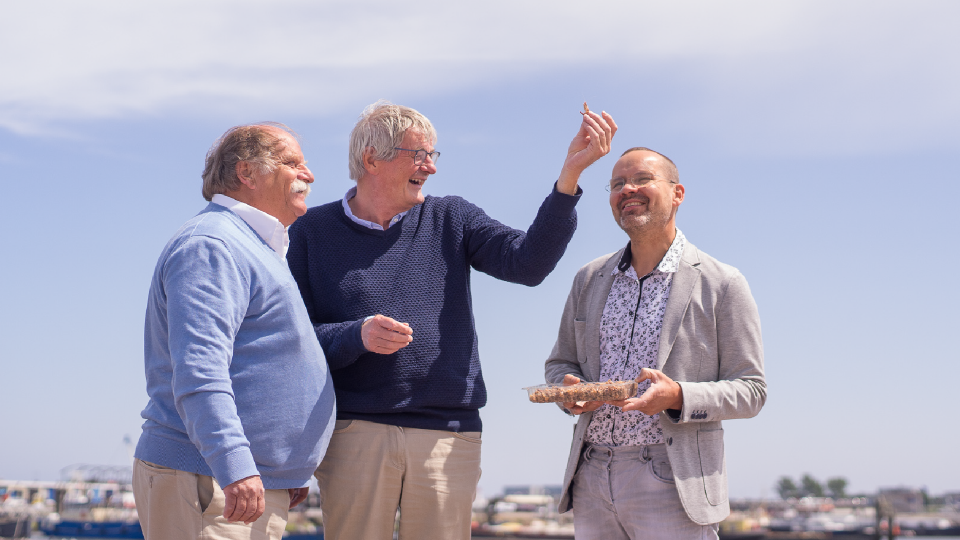Refined chitosan can play a major role in the transition to biodegradable raw materials and intermediary products – like fibres, polymers and composites.
Enjoying fresh shrimp? They would be even better if the tons of shells left after peeling weren’t just tossed in the trash, but served a beneficial purpose for green chemistry. In the Northern Netherlands, a unique refinery technology is being developed that transforms shrimp shells into a raw material for paints and coatings, bioplastics, water purification and medical applications.

Everything starts with an idea A vision of R&D manager Rob Pikkert of Telson seafood led to a surprising interplay with the chemical industry in the Northern Netherlands. “It all started with our desire to bring shrimp peeling back to the Northern Netherlands, instead of having it done Morocco”, recalls Pikkert. “The shrimp peeling company GPC Kant – we are under the same roof with them in Lauwersoog – developed a peeling machine with a similar level of quality and productivity as the manual peelers abroad. Only, what do you do with all those tons of shrimp shells that are left?"
Scalable technology
Waste costs money, and it has no place in a circular economy. So Telson and Kant looked for a way to use the shrimp shells for other products. They were on the right track, because shrimp contain a substance called chitin that can be transformed into chitosan. “When chitin is transformed into chitosan it has all kinds of valuable characteristics”, explains the R&D manager. “So we threw out a line to the chemical industry in the Northern Netherlands, and now we are in a consortium working on a scalable refinery technology for shrimp shells. We’ve concentrated on end-uses like paints and coatings, bioplastics, water purification and medical applications. Those products require an increasing degree of complex chemical processing.”
Biodegradability
As yet, lorries still transport some 500,000 kilos of unpeeled shrimp per week to Morocco. But because the shrimp shells can be used for new applications, increasing quantities of shrimp are now being peeled entirely by machine in Lauwersoog.
“That means a huge drop in CO2 emissions, and a much fresher product, as well as employment here in the region”, Pikkert says. “Also, in taking this step we are contributing to the greening of chemistry. Refined chitosan can play a major role in the transition to biodegradable raw materials and intermediary products – like fibres, polymers and composites.”
The consortium is now working to scale up the refinery technology and set up a pilot plant in the harbour of Lauwersoog (slated for completion by end 2019). It then expects to further expand the trial factory into a full-fledged refinery.